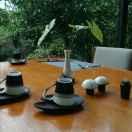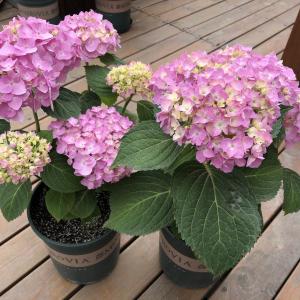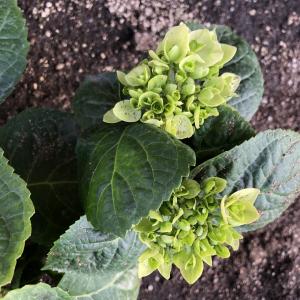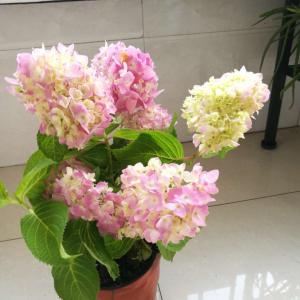文章
Miss Chen
2018年05月05日

Description: This annual plant is about ½–4' tall. Medium to large plants (greater than 1½' tall) branch occasionally, while small plants (less than 1½' tall) are often unbranched. The central and lateral stems are hairless. Alternate leaves are up to 6" long and 4" across; they are ovate or deltoid-ovate with 2-4 large teeth along their margins. These teeth are pointed and widely spaced. The uppermost leaves are moreFlowering Plants narrow and may have only 0-1 teeth along their margins. The widely spreading leaves are medium to dark green and hairless; they are not white-mealy on their undersides. The leaf tips are pointed, while their bases are truncate or slightly indented. The slender petioles are up to 1" long. The central stem and upper lateral stems terminate in panicles of sessile clustered flowers. In addition to these, there are usually secondary panicles that develop from the axils of the upper leaves. The branches of these panicles can be hairless or conspicuously hairy. Individual flowers are green or greenish white and only 1/8" (3 mm.) across, consisting of 5 sepals, 5 stamens, and a flattened ovary with a pair of tiny styles at its apex. There are no petals. The sepals are ovate and slightly keeled. The blooming period can occur from late spring into the fall. On an individual plant in bloom, the flowers are at different stages of development. Pollination is by wind. The persistent sepals only partially cover the developing seeds; there is only one seed per flower. Each seed is covered with a thin membrane that is easily removed. Individual seeds are flattened, circular in circumference, and shiny black; they are 1.5–2.0 mm. across. The root system consists of a taproot. This plant spreads into new areas by reseeding itself.
Cultivation: The preference is dappled sunlight to medium shade and mesic to dry conditions. While this plant is usually found on rocky ground, it will adapt to ordinary garden soil. Depending on the fertility of the soil and moisture conditions, the size of individual plants can vary considerably.
Range & Habitat: Maple-Leaved Goosefoot is uncommon to occasional in most areas of Illinois, except in the east-central section of the state, where it is rare or absent (see Distribution Map). This is a native plant. Habitats include rocky upland woodlands, shaded or semi-shaded ledges of cliffs, bottoms of thinly wooded bluffs, recently logged or burned woodlands, woodland openings, shaded to semi-shaded areas of rocky glades, thickets, and fence rows. Maple-Leaved Goosefoot is often found in high quality habitats, but it also occurs in disturbed areas. This is one of the less weedy Chenopodium spp.
Faunal Associations: Little is known about floral-faunal relationships for this unusual woodland plant, although several moths, skippers, and leaf beetles are known to feed on Chenopodium spp. primarily in weedy open areas. The Bobwhite and several sparrows eat the seeds of these species, while White-Tailed Deer occasionally browse on the foliage.

Photographic Location: Ledge of a sandstone cliff at the Portland Arch in west-central Indiana.
Comments: Maple-Leaved Goosefoot (Chenopodium simplex) has very distinctive leaves, which makes it is easy to recognize. These leaves are usually larger in size than those of many other Chenopodium spp., and they usually have 1-4 pairs of widely spaced large teeth. Other Chenopodium spp. have leaves with smaller teeth or their leaves lack teeth altogether. Unlike Maple-Leaved Goosefoot, these latter species often have white-mealy leaf undersides, white-mealy upper stems, and/or white-mealy sepals. They are usually found in sunny disturbed areas rather than woodlands. The American species, Maple-Leaved Goosefoot (Chenopodium simplex), closely resembles a European species with the same common name, Chenopodium hybridum (Maple-Leaved Goosefoot), but it has a different number of chromosomes. The American species is sometimes referred to as Chenopodium gigantospermum, which refers to its relatively large seeds for species in this genus.
Cultivation: The preference is dappled sunlight to medium shade and mesic to dry conditions. While this plant is usually found on rocky ground, it will adapt to ordinary garden soil. Depending on the fertility of the soil and moisture conditions, the size of individual plants can vary considerably.
Range & Habitat: Maple-Leaved Goosefoot is uncommon to occasional in most areas of Illinois, except in the east-central section of the state, where it is rare or absent (see Distribution Map). This is a native plant. Habitats include rocky upland woodlands, shaded or semi-shaded ledges of cliffs, bottoms of thinly wooded bluffs, recently logged or burned woodlands, woodland openings, shaded to semi-shaded areas of rocky glades, thickets, and fence rows. Maple-Leaved Goosefoot is often found in high quality habitats, but it also occurs in disturbed areas. This is one of the less weedy Chenopodium spp.
Faunal Associations: Little is known about floral-faunal relationships for this unusual woodland plant, although several moths, skippers, and leaf beetles are known to feed on Chenopodium spp. primarily in weedy open areas. The Bobwhite and several sparrows eat the seeds of these species, while White-Tailed Deer occasionally browse on the foliage.

Photographic Location: Ledge of a sandstone cliff at the Portland Arch in west-central Indiana.
Comments: Maple-Leaved Goosefoot (Chenopodium simplex) has very distinctive leaves, which makes it is easy to recognize. These leaves are usually larger in size than those of many other Chenopodium spp., and they usually have 1-4 pairs of widely spaced large teeth. Other Chenopodium spp. have leaves with smaller teeth or their leaves lack teeth altogether. Unlike Maple-Leaved Goosefoot, these latter species often have white-mealy leaf undersides, white-mealy upper stems, and/or white-mealy sepals. They are usually found in sunny disturbed areas rather than woodlands. The American species, Maple-Leaved Goosefoot (Chenopodium simplex), closely resembles a European species with the same common name, Chenopodium hybridum (Maple-Leaved Goosefoot), but it has a different number of chromosomes. The American species is sometimes referred to as Chenopodium gigantospermum, which refers to its relatively large seeds for species in this genus.
0
0
文章
Miss Chen
2018年05月05日

Description: This perennial wildflower is 1-3' tall and unbranched. The erect central stem is light green to pale purple, terete, glabrous, and often glaucous. A non-flowering plant has a single compound leaf at the apex of this stem, while a flowering plant has two compound leaves. The lower compound leaf of a flowering plant is located toward the middle of the central stem, where it is divided into a whorl of 3 compound leaflets. Each compound leaflet is ternately divided into 9 simple subleaflets that are arranged in groups of 3 (2 lateral groups and a terminal group). Less often, a compound leaflet may be divided into 15 simple subleaflets that consist of 2 additional lateral groups. The basal stalks (petiolules) of the compound leaflets are long and ascending; they are light green and glabrous. The subleaflets are 1-3" long and ¾-2" across (or occasionally wider); they are broadly ovate-oblong to obovate-oblong in shape and smooth along their margins, terminating in 2-5 cleft lobes with blunt tips. The upper surface of the subleaflets is glabrous and either gray-green, yellowish green, or medium green, while the lower surface is pale green and glabrous. The slender basal stalklets of the subleaflets are light green and glabrous. The upper compound leaf of a flowering plant is located under the inflorescence. This compound leaf resembles the lower compound leaf, except its 3 compound leaflets are smaller in size because they have only 3 subleaflets each.
On a flowering plant, the central stem terminates in a floral panicle about 1-3" long that is rounded or elongated; each panicle usually has 5-30 flowers (rarely more). Individual flowers are about 1/3" (8 mm.) across, consisting of 6 petaloid sepals, insignificant petals, 6 stamens, and an ovoid ovary with a beak-like style. Depending on the local ecotype, the oblanceolate sepals are greenish yellow, greenish brown, or greenish purple. Underneath each flower, there are 3-4 green bractlets that resemble sepals. The branching stalks of the panicle are light green, glabrous, and ascending. The blooming period occurs from mid- to late spring before the leaves have fully developed. Afterwards, the flowers are replaced by berry-like seeds that are about 1/3" across, globoid in shape, glabrous, and glaucous. These seeds are initially green, but they later become bright blue at maturity during the summer. The seed coat is fleshy and contains carbohydrates. The root system is rhizomatous and fibrous.
Cultivation: The preference is dappled sunlight during the spring, followed by light shade during the summer, at a location that has average moisture levels and fertile loamy soil. The soil should also contain abundant organic matter from decaying leaves and other plant materials, as typically occurs underneath trees. The large seeds are difficult to germinate. However, once it becomes established at a favorable site, Blue Cohosh is long-lived.
Range & Habitat: The native Blue Cohosh occurs occasionally in central Illinois, northern Illinois, and the Shawnee Hills of southern Illinois. In other areas of southern Illinois, this wildflower is uncommon or absent. Habitats include rich mesic woodlands, bluffs, and wooded slopes of large ravines. This relatively conservative wildflower can be found in woodlands dominated by either oaks or maples where the native ground flora is still intact.
Faunal Associations: Both pollen and nectar are available as floral rewards to insect visitors. These visitors include miscellaneous flies (Syrphid, Tachinid, Muscid, etc.), parasitoid wasps (Braconid, Ichneumonid, etc.), small Halictid bees (Lasioglossum spp., etc.), and bumblebees (Robertson, 1929; Hannan & Prucher, 1996). Apparently, very few insects feed destructively on the foliage and other parts of Blue Cohosh. Caterpillars of the moth Clepsis melaleucana (Black-Patched Clepsis) and the plant bug Metriorrhynchomiris dislocatus have been observed to feed on this plant (Covell, 1984/2005; Knight, 1941). Both of these insects are polyphagous. Among vertebrate animals, both the White-Footed Mouse and Woodland Deer Mouse feed on the berry-like seeds of Blue Cohosh (Hamilton, 1941). However, because of the bright blue coloration of the fleshy seed coats and their carbohydrates, woodland birds are probably the primary dispersal agents of the seeds, which are known to be toxic to humans. Because the bitter-tasting foliage of this wildflower contains toxic glycosides and alkaloids, it is rarely eaten by White-Tailed Deer and other mammalian herbivores.
Photographic Location: A wooded bluff in Vermilion County, Illinois.

Comments: Generally the subleaflets (or simple leaflets) of Blue Cohosh are remarkably similar in appearance to those of Meadow Rue species (Thalictrum spp.), except they are often grayish green or yellowish green and tend to have more terminal lobes (2-5) than the latter. However, the flowers and berry-like seeds of Blue Cohosh are quite different from those of Meadow Rue species, and they belong to separate plant families. In addition to the typical variety of Blue Cohosh that is described here, there is also a more eastern variety of this wildflower that is referred to as Giant Blue Cohosh (Caulophyllum thalictroides giganteum). Thus far, Giant Blue Cohosh has not been found in Illinois. It differs from the typical Blue Cohosh in having slightly larger flowers (about ½" across) that are deep mauve or purple; these flowers bloom about two weeks earlier before its foliage has unfolded. The subleaflets of Giant Blue Cohosh are slightly larger in size as well. It is often classified as a distinct species, Caulophyllum giganteum.
On a flowering plant, the central stem terminates in a floral panicle about 1-3" long that is rounded or elongated; each panicle usually has 5-30 flowers (rarely more). Individual flowers are about 1/3" (8 mm.) across, consisting of 6 petaloid sepals, insignificant petals, 6 stamens, and an ovoid ovary with a beak-like style. Depending on the local ecotype, the oblanceolate sepals are greenish yellow, greenish brown, or greenish purple. Underneath each flower, there are 3-4 green bractlets that resemble sepals. The branching stalks of the panicle are light green, glabrous, and ascending. The blooming period occurs from mid- to late spring before the leaves have fully developed. Afterwards, the flowers are replaced by berry-like seeds that are about 1/3" across, globoid in shape, glabrous, and glaucous. These seeds are initially green, but they later become bright blue at maturity during the summer. The seed coat is fleshy and contains carbohydrates. The root system is rhizomatous and fibrous.
Cultivation: The preference is dappled sunlight during the spring, followed by light shade during the summer, at a location that has average moisture levels and fertile loamy soil. The soil should also contain abundant organic matter from decaying leaves and other plant materials, as typically occurs underneath trees. The large seeds are difficult to germinate. However, once it becomes established at a favorable site, Blue Cohosh is long-lived.
Range & Habitat: The native Blue Cohosh occurs occasionally in central Illinois, northern Illinois, and the Shawnee Hills of southern Illinois. In other areas of southern Illinois, this wildflower is uncommon or absent. Habitats include rich mesic woodlands, bluffs, and wooded slopes of large ravines. This relatively conservative wildflower can be found in woodlands dominated by either oaks or maples where the native ground flora is still intact.
Faunal Associations: Both pollen and nectar are available as floral rewards to insect visitors. These visitors include miscellaneous flies (Syrphid, Tachinid, Muscid, etc.), parasitoid wasps (Braconid, Ichneumonid, etc.), small Halictid bees (Lasioglossum spp., etc.), and bumblebees (Robertson, 1929; Hannan & Prucher, 1996). Apparently, very few insects feed destructively on the foliage and other parts of Blue Cohosh. Caterpillars of the moth Clepsis melaleucana (Black-Patched Clepsis) and the plant bug Metriorrhynchomiris dislocatus have been observed to feed on this plant (Covell, 1984/2005; Knight, 1941). Both of these insects are polyphagous. Among vertebrate animals, both the White-Footed Mouse and Woodland Deer Mouse feed on the berry-like seeds of Blue Cohosh (Hamilton, 1941). However, because of the bright blue coloration of the fleshy seed coats and their carbohydrates, woodland birds are probably the primary dispersal agents of the seeds, which are known to be toxic to humans. Because the bitter-tasting foliage of this wildflower contains toxic glycosides and alkaloids, it is rarely eaten by White-Tailed Deer and other mammalian herbivores.
Photographic Location: A wooded bluff in Vermilion County, Illinois.

Comments: Generally the subleaflets (or simple leaflets) of Blue Cohosh are remarkably similar in appearance to those of Meadow Rue species (Thalictrum spp.), except they are often grayish green or yellowish green and tend to have more terminal lobes (2-5) than the latter. However, the flowers and berry-like seeds of Blue Cohosh are quite different from those of Meadow Rue species, and they belong to separate plant families. In addition to the typical variety of Blue Cohosh that is described here, there is also a more eastern variety of this wildflower that is referred to as Giant Blue Cohosh (Caulophyllum thalictroides giganteum). Thus far, Giant Blue Cohosh has not been found in Illinois. It differs from the typical Blue Cohosh in having slightly larger flowers (about ½" across) that are deep mauve or purple; these flowers bloom about two weeks earlier before its foliage has unfolded. The subleaflets of Giant Blue Cohosh are slightly larger in size as well. It is often classified as a distinct species, Caulophyllum giganteum.
0
0
文章
巴黎铁塔
2018年05月05日
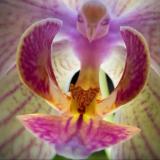

一、新玉缀叶子出现这褶皱原因
1、刚换盆的原因
多肉是经常需要换盆的,因为多肉如果在一个盆里长得时间太长,根系很会容易坏死和腐烂,这样对多肉的生长十分不利,所以修根换盆是促进它们生长的一个有效手段。换盆时,它无法从外界吸收养分,所以很容易就会多吸收叶片的营养,这样叶片就会有点萎缩。
2、新玉缀根部有问题
大部分的叶片萎缩问题,可能是因为根部出现了一些损伤。因为不管是哪一种植物,根部算是植物营养来源的血管,所以如果根部出现了问题,就会反映在植物的某一个部位,比如茎,叶子,果实等等。所以当新玉缀的根部出现了问题,就会影响整个植株的生长发育,可能第一个就是体现在了叶子上。叶子由于营养供给不足,就会出现褶皱的现象。

3、盆内缺水
虽然多肉性的植物不能经常给予水分,但是也不能缺水,否则会导致新玉缀的叶片出现褶皱,根部有时候也会比较干,看起来没有厚实感。
二、应对方法
1、换盆应对方法
如果是刚换盆的原因,可以让新玉缀多缓两天,适应一下新的环境。将水、土壤、肥料都供给好,它就会逐渐适应新的生长环境,叶子褶皱现象也会逐渐消失。
2、根部应对方法
如果确定是根部出现了问题,则应该及时采取对策,将会坏掉的根去除,加强肥料供给,保证充足的营养,慢慢的新玉缀就会将自己调整到最好的状态。
3、缺水应对方法
可以摸一下盆土,先确定是否是缺水的问题,如果真的是这个原因,则需要及时浇水,而且不能浇的太多,而且在日后的照料过程中,要时刻观察,切勿让它再次出现缺水状况,造成损伤。

0
0
文章
家里的二哈爱吃花
2018年05月05日

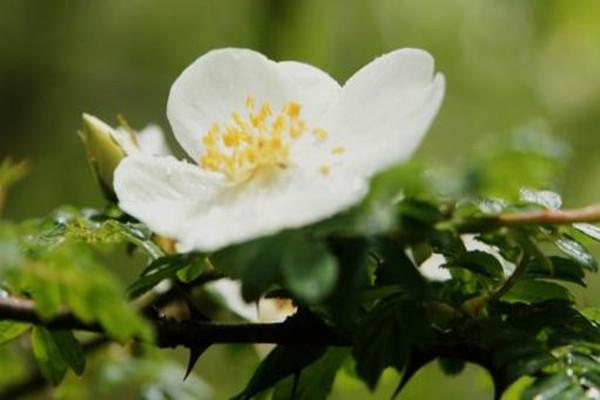
1.白粉病
它很可能在叶片、叶柄和嫩梢以及花蕾上面发病。在成叶上面生出来一些不规则的白粉状斑点,然后病叶子就会从叶子尖上面,或者是叶子边上开始慢慢的变成褐色,这样子就会最终让整个叶子慢慢干枯脱落。如果是嫩叶子不小心感染上了,就会逐渐扩大,边缘上面也开始不明显了,嫩叶子的正反两面就会生出来白色的粉斑,之后就会盖满上整个叶子。叶片也开始变成淡灰色或者是紫红色。如果是叶柄染上的话,它的节间就开始缩短,茎部也开始变细,还有些病梢上面也会出现干枯,然后覆盖满白粉。如果是花蕾染病,就会让花梗变得畸形,严重直接死掉。
防治方法:选一些抗制白粉病的品种。在冬天修剪的时候,一定要注意把那些病枝、病芽都剪去。在发病初期的时候,可以少施加一点氮肥,多增加一点磷钾肥,这样就可以提高它的抗病力。另外还要注意在下雨之后及时的排水,防止湿气长时间停留,这样就可以减少病害的发生了。
2.黑斑病
发病的话,一般都是侵害它的叶片、叶柄和嫩梢上面,叶子刚开始发病的时候,在正面就会出现一些紫褐色至褐色的小点,等扩大之后就会成为一些圆形或者不定形的黑褐色病斑。
防治方法:我们就可以选择一些多菌灵或者达克宁等一些药物,然后对它的发病地方进行喷洒就可以了。
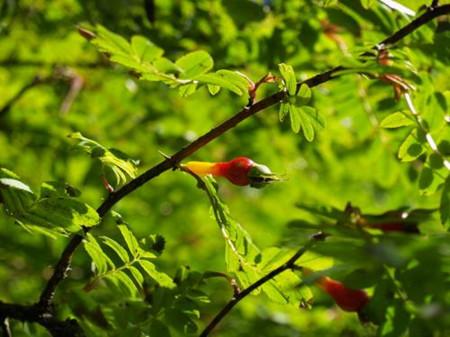
3.炭疽病
产生的斑点一般都是在叶子边上,形状近似半圆状,斑点的边上颜色是深褐色的,到了中间会相应成褐色至浅褐色,以后就会在病斑上面生出来多数的黑色小点。这种病菌一般可以在病落叶上面过冬。在比较温暖、潮湿的环境下面,孢子萌发起来就会侵害叶片。
防治方法:可以在秋末冬初的时候进行及时的清理,把那些病落叶给收集起来,然后统一烧掉。还要加强保护,适当的给予修整。对较密集的枝叶进行处理,保持通风顺畅确保下面的枝叶接受光照。或者使用一些药物也是可以的。
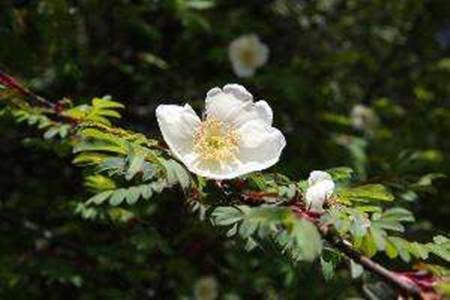
0
0
文章
权问薇
2018年05月05日


一、种子繁殖
1、采收
等到它的蒴果颜色变成黄色的时候,我们就可以去采收它的果子了,采收好之后,要给它阴干,不能日晒。阴干之后,我们就可以把它的果壳给去掉并贮藏起来,之后就可以选择合适的时间去种它了。
2、播种
种子选好了之后,我们就可以去种它了。一般就是把种子依次的撒在盆土里面,之后再给它进行保温和保湿就行了,也或者可以用另外一种方法去种,因为它的种子发芽率很低,而且种子也比较的细小,不怎么容易得到,所以我们可以在每年3月到5月的前后,等到它开花之后,我们就可以疏松它的盆土,让种子很自然的掉到盆子里,这样就可以自行种下了。种好了之后,我们就要给它盖上玻璃给它遮阴和保温,一般5到6天的时候就可以发芽了。

3、养护
等到种子出芽之后,我们就可以把玻璃拿掉,免得它徒长。然后等上半个月之后就可以给它定植了。
二、扦插和分株
1、怎么操作
不管是扦插还是分株,首先我们都应该先把插条准备好,扦插的话,一般都是5到6月份进行,首先选择植株上一条较嫩的枝条,给它剪下来插在土壤里就可以了。分株的话,也是很简单的,一般都是在秋天进行,我们可以将它植株上的嫩芽给它切下来,然后就可以扦插在土壤里,等上一些时间,这个嫩芽就会开始扎根了。
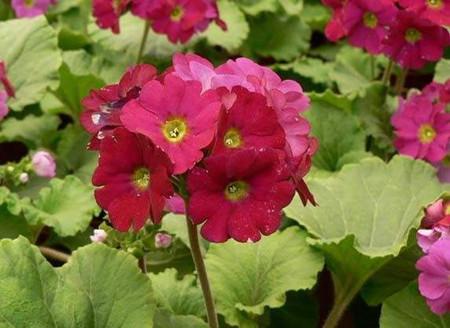
2、后期养护
不管是用的哪一种方式去繁殖的,在扦插好了之后,我们就要对它进行养护。首先可以让它渐渐的去见阳光,并施加一点肥料,然后等到10月下旬的时候,再将它移到室内向阳的地方了,这样才能及时给它保暖,等到11月的时候,就可以开出花了。
0
0
文章
巴黎铁塔
2018年05月05日

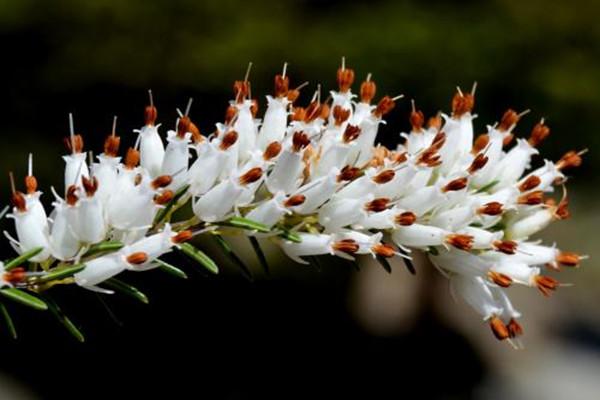
1.土壤不适合
欧石楠一般比较喜欢肥沃一点的酸性土壤,而且还要保证它的土质是比较疏松的,透气性也要好一点,如果在栽培它的时候没有选对土壤,那么就很可能因为营养跟不上或者根部呼吸不好,就造成它比较容易掉叶子。如果是这样的话,那就需要重新换一下土壤了。

2.不适合的光照和温度
欧石楠是比较偏向于凉快和湿润一点的地方,另外还要阳光充足一点。它不怎么害怕冷,但是却很害怕夏天的高温。它一般比较适合生长在温度在15到35度之间,虽然它比较耐寒冷,但是在冬天的时候温度也不能太低了。另外在夏天的时候还不能让温度超过35度。如果温度太高或者在冬天温度又太低的话,就会让它产生不适应,进而就会掉叶子。所以一定要保证好温度的适合,在夏天的时候还要进行遮阴处理。另外光也是很重要的,千万不能长时间让它处在比较阴暗的地方,这样就让光照不够了,所以也是会掉叶子的。我们尽量把它放在阳光多的地方。

3.浇水和施肥的不合理
它对肥料需要一般不是很高的,一般在施肥的时候还要跟浇水同时进行。如果肥料太浓或者太多的话,就会直接把它根破坏了,这样就没办法传送营养,就掉叶子了。另外浇水不适当的话,也是会产生影响的。在浇水的时候,提前要把给加工一下,然后选择在早上去浇更好。虽然它对肥料要求不高,但是也要保证营养的充足啊,不能直接不提供肥料了,只有这样才能让它生长的更好,开花也更加多。
0
0
文章
Miss Chen
2018年05月04日

Description: This perennial wildflower is 4-12" tall and unbranched, except for possibly 1-2 flowering side stems near the apex. The erect central stem is light green to purplish green, terete, and hairy. At the base of each plant, 1-2 basal leaves are commonly present; they are about 1" long and across,Close-up of Flowers cordate-orbicular, and bluntly dentate or undulate along their margins. Each basal leaf has a long slender petiole. The alternate leaves are up to 2" long and 1" across; they are oval-ovate to oblong, bluntly dentate or undulate along the margins, and ciliate. At the base, the alternate leaves are sessile or slightly clasp the central stem. The alternate leaves become slightly shorter and more narrow as they ascend the stem. The central stem terminates in a raceme of flowers. The flowers and buds are concentrated toward the apex of the raceme, while cylindrical seedpods (siliques) develop along the remainder of the raceme. Each flower is about ½–¾" across, consisting of 4 petals, 4 sepals, several stamens, and a single stout style of the pistil. The petals are pale purple or purple-tinted white and obovate in shape. The sepals are purple, hairy, and membranous-white along their margins. The petals are much longer than the sepals. The blooming occurs during mid-spring and lasts about 2 weeks. The flowers are fragrant. Each flower is replaced by an ascending silique up to 1" long. The 2-valved siliques are green to purple; each silique contains a single row of seeds and it has a stout pedicel up to 1" long at its base. Eventually, the silique splits in half lengthwise to release the seeds. The root system is fibrous and tuberous.
Cultivation: This wildflower develops early during the spring when it receives dappled sunlight from its location underneath deciduous trees. It likes an evenly moist site with fertile loamy soil and abundant leaf mold. By the beginning of summer, it has already died down and released its seeds.
Range & Habitat: The native Purple Cress is occasional in NE and east central Illinois, but it is rare or absent elsewhere in the state (see Distribution Map). Habitats include moist deciduous woodlands, low wooded valleys, and areas along shaded seeps and springs, particularly where limestone comes close to the surface of the ground. This conservative species is normally found where the original ground flora is still intact. It is one of the spring wildflowers in woodlands that is threatened by the spread of Alliaria petiolata (Garlic Mustard).

Faunal Associations: Records about floral-faunal relationships for this species are limited. Insect visitors of the flowers are probably similar to those of a closely related species, Cardamine bulbosa (Spring Cress), which blooms only a little latter and occupies similar habitats. These insects include various kinds of bees (honeybees, mason bees, Andrenid bees, Halictid bees), bee flies (including Bombylius major, the Giant Bee Fly), other miscellaneous flies, and butterflies that appear during the spring. Most of these insects suck nectar from flowers, although some of the bees and flies also seek pollen. An oligolectic flea beetle that prefers woodland habitats, Phyllotreta bipustulata, feeds on the foliage of Purple Cress; it also feeds on the foliage of Dentaria spp. (Toothworts). Mammalian herbivores rarely feed on this wildflower because its foliage is short-lived and unpleasant-tasting (bitter and spicy).
Photographic Location: Along a shaded seep in Vermilion County, Illinois.
Comments: This is another lovely spring wildflower of the woodlands. Purple Cress is similar to Cardamine bulbosa (Spring Cress), except that the latter has flowers with white petals and green sepals. Spring Cress also has a glabrous central stem, while Purple Cress has a hairy stem. In contrast to Dentaria spp. (Toothworts) and many other Cardamine spp. (Bitter Cress species), both of these wildflowers lack compound leaves that are pinnately or palmately divided. Another species of the Mustard family, Iodanthus pinnatifidus (Purple Rocket), produces pale purple flowers on long racemes in damp wooded areas. However, Purple Rocket is a larger plant that blooms later in the year (late spring to mid-summer). Other common names of Cardamine douglassii are Purple Spring Cress and Northern Bitter Cress.
Cultivation: This wildflower develops early during the spring when it receives dappled sunlight from its location underneath deciduous trees. It likes an evenly moist site with fertile loamy soil and abundant leaf mold. By the beginning of summer, it has already died down and released its seeds.
Range & Habitat: The native Purple Cress is occasional in NE and east central Illinois, but it is rare or absent elsewhere in the state (see Distribution Map). Habitats include moist deciduous woodlands, low wooded valleys, and areas along shaded seeps and springs, particularly where limestone comes close to the surface of the ground. This conservative species is normally found where the original ground flora is still intact. It is one of the spring wildflowers in woodlands that is threatened by the spread of Alliaria petiolata (Garlic Mustard).

Faunal Associations: Records about floral-faunal relationships for this species are limited. Insect visitors of the flowers are probably similar to those of a closely related species, Cardamine bulbosa (Spring Cress), which blooms only a little latter and occupies similar habitats. These insects include various kinds of bees (honeybees, mason bees, Andrenid bees, Halictid bees), bee flies (including Bombylius major, the Giant Bee Fly), other miscellaneous flies, and butterflies that appear during the spring. Most of these insects suck nectar from flowers, although some of the bees and flies also seek pollen. An oligolectic flea beetle that prefers woodland habitats, Phyllotreta bipustulata, feeds on the foliage of Purple Cress; it also feeds on the foliage of Dentaria spp. (Toothworts). Mammalian herbivores rarely feed on this wildflower because its foliage is short-lived and unpleasant-tasting (bitter and spicy).
Photographic Location: Along a shaded seep in Vermilion County, Illinois.
Comments: This is another lovely spring wildflower of the woodlands. Purple Cress is similar to Cardamine bulbosa (Spring Cress), except that the latter has flowers with white petals and green sepals. Spring Cress also has a glabrous central stem, while Purple Cress has a hairy stem. In contrast to Dentaria spp. (Toothworts) and many other Cardamine spp. (Bitter Cress species), both of these wildflowers lack compound leaves that are pinnately or palmately divided. Another species of the Mustard family, Iodanthus pinnatifidus (Purple Rocket), produces pale purple flowers on long racemes in damp wooded areas. However, Purple Rocket is a larger plant that blooms later in the year (late spring to mid-summer). Other common names of Cardamine douglassii are Purple Spring Cress and Northern Bitter Cress.
0
0
文章
Miss Chen
2018年05月04日

Description: This perennial wildflower is ½–1½' tall with an erect stem that is unbranched or sparingly branched toward the apex where the inflorescence occurs. The central stem is medium green, glabrous, and terete; it occasionally has fine longitudinal ridges. There are both basal leaves and alternate leaves. The blades of the basal leaves are up to 1¼" long and 1" across; they are oval to orbicular in shape,Raceme of Flowers medium green, glabrous, and smooth or undulate along their margins. The slender petioles of the basal leaves are usually longer than the blades. The alternate leaves are produced sparingly along the central stem; they are up to 2" long and 1" across, medium green, and glabrous. The alternate leaves are oblong-ovate in shape and their margins are smooth, undulate, or bluntly dentate; at the base, each alternate leaf is sessile or short-petioled. The central stem terminates in a raceme of flowers; the flowers usually bloom in the upper half of the raceme, while their siliques (narrowly cylindrical seedpods) develop below. Each flower consists of 4 petals, 4 sepals, 6 stamens, and a pistil with a single style; when the flower is fully open, it spans about ½" across. The petals are white with rounded tips. The glabrous sepals are initially green, but they become yellow as they age. The petals are much longer than the sepals. Each flower has a slender pedicel about ½" long. The blooming period occurs from mid- to late spring and lasts about 3 weeks. The flowers are sometimes fragrant. Each flower is replaced by a slender hairless silique about 1" long that is somewhat flattened. The siliques are ascending to erect; they eventually divide into two parts to release their seeds. These seeds are ovoid, somewhat flattened, and wingless; they are arranged in a single row in each silique. Each plant has a swollen tuberous rootstock at the base of the central stem; this tuberous rootstock has spreading fibrous roots that occasionally produce small tubers. New plants are created from either the seeds or tubers.
Cultivation: The preference is partial sun or dappled sunlight, wet to moist conditions, and a loose fertile loam with organic material. Shallow standing water is tolerated if it is temporary; full sun is tolerated if the ground is consistently moist. Most growth and development occurs during the spring before the canopy trees leaf out.
Range & Habitat: The native Spring Cress is occasional to locally common in most areas of Illinois; it is less common or absent in the SW section of the state (see Distribution Map). This species may be less common than in the past. Habitats include low woodlands along rivers, edges of vernal pools in woodlands, damp depressions in rocky bluffs, woodland seeps and springs, and damp meadows.
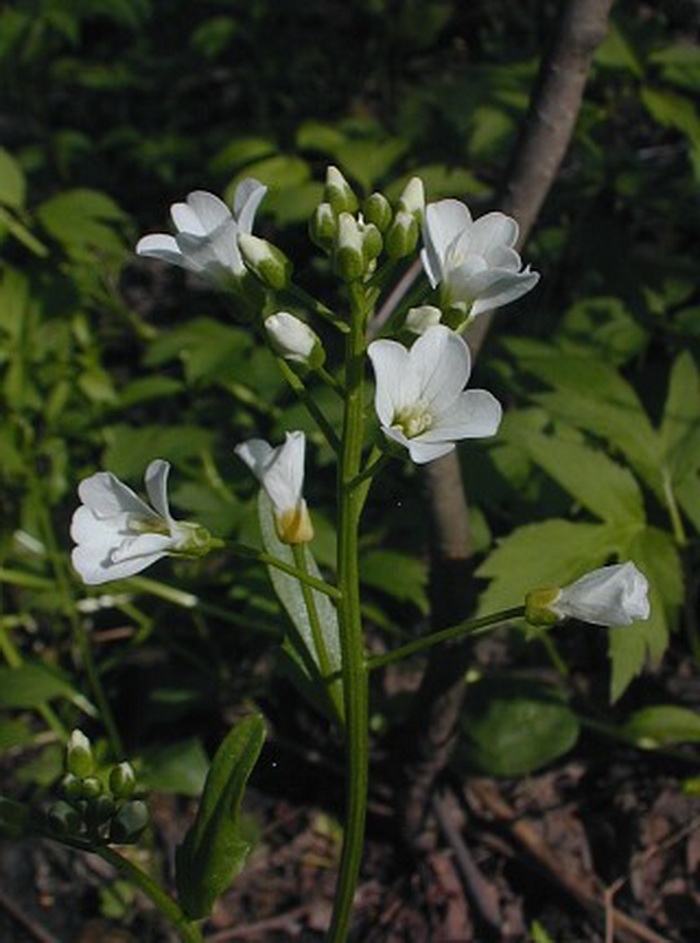
Faunal Associations: The nectar of the flowers attracts cuckoo bees (Nomada spp.), mason bees (Osmia spp.), little carpenter bees (Ceratina spp.), Halictid bees (Augochlorella spp., Halictus spp., & Lasioglossum spp.), Andrenid bees (Andrena spp.), bee flies (Bombylius spp.), dance flies (Empis spp.), Syrphid flies (miscellaneous), small- to medium-sized butterflies (miscellaneous), and skippers (miscellaneous). Some of the bees also collect pollen. The flea beetles Phyllotreta oblonga and Phyllotreta bipustulata feed on Spring Cress and other Cardamine spp. (Bitter Cress species). Mammalian herbivores usually avoid the consumption of Spring Cress because its foliage is pungent and somewhat bitter.
Photographic Location: A low woodland along the Sangamon river in Piatt County, Illinois.
Comments: Spring Cress is one of the more attractive members of the Mustard family as its flowers are fairly large (spanning about ½" across). This wildflower favors the more damp areas of woodlands and it is sometimes found in soggy meadows. Another native species, Cardamine douglassii (Purple Cress), is very similar to Spring Cress. Both species prefer similar habitats, bloom during the spring, and their flowers and foliage are similar to each other. Purple Cress differs from Spring Cress by the purplish-pink tint of its flower petals, sepals that are dark purple and hairy, and stems that are hairy toward the base. It has a tendency to bloom about 2 weeks before Spring Cress. Other Cardamine spp. (Bitter Cress species) in Illinois have either smaller flowers (about ¼" across or less) or at least some of their leaves are deeply divided into lobes (either pinnately or palmately). Spring Cress (and other species in the genus) isn't classified as an Arabis sp. (Rock Cress) because of its wingless seeds; the seeds of Rock Cresses have winged membranous margins of varying widths.
Cultivation: The preference is partial sun or dappled sunlight, wet to moist conditions, and a loose fertile loam with organic material. Shallow standing water is tolerated if it is temporary; full sun is tolerated if the ground is consistently moist. Most growth and development occurs during the spring before the canopy trees leaf out.
Range & Habitat: The native Spring Cress is occasional to locally common in most areas of Illinois; it is less common or absent in the SW section of the state (see Distribution Map). This species may be less common than in the past. Habitats include low woodlands along rivers, edges of vernal pools in woodlands, damp depressions in rocky bluffs, woodland seeps and springs, and damp meadows.

Faunal Associations: The nectar of the flowers attracts cuckoo bees (Nomada spp.), mason bees (Osmia spp.), little carpenter bees (Ceratina spp.), Halictid bees (Augochlorella spp., Halictus spp., & Lasioglossum spp.), Andrenid bees (Andrena spp.), bee flies (Bombylius spp.), dance flies (Empis spp.), Syrphid flies (miscellaneous), small- to medium-sized butterflies (miscellaneous), and skippers (miscellaneous). Some of the bees also collect pollen. The flea beetles Phyllotreta oblonga and Phyllotreta bipustulata feed on Spring Cress and other Cardamine spp. (Bitter Cress species). Mammalian herbivores usually avoid the consumption of Spring Cress because its foliage is pungent and somewhat bitter.
Photographic Location: A low woodland along the Sangamon river in Piatt County, Illinois.
Comments: Spring Cress is one of the more attractive members of the Mustard family as its flowers are fairly large (spanning about ½" across). This wildflower favors the more damp areas of woodlands and it is sometimes found in soggy meadows. Another native species, Cardamine douglassii (Purple Cress), is very similar to Spring Cress. Both species prefer similar habitats, bloom during the spring, and their flowers and foliage are similar to each other. Purple Cress differs from Spring Cress by the purplish-pink tint of its flower petals, sepals that are dark purple and hairy, and stems that are hairy toward the base. It has a tendency to bloom about 2 weeks before Spring Cress. Other Cardamine spp. (Bitter Cress species) in Illinois have either smaller flowers (about ¼" across or less) or at least some of their leaves are deeply divided into lobes (either pinnately or palmately). Spring Cress (and other species in the genus) isn't classified as an Arabis sp. (Rock Cress) because of its wingless seeds; the seeds of Rock Cresses have winged membranous margins of varying widths.
0
0
文章
张祥明
2018年05月04日


一、浇水引起
1、原因
有时浇水量太大,会让根部无法正常呼吸,最后窒息烂根,此时水分就没法从根部传到叶子上,让叶子变得干枯。或很长时间不浇水,就会让根系枯死,如果此时猛浇水,就会让叶子大量开始变得干枯,甚至致使植株死掉。
2、解决方法
浇水不可以太多,但也不可太少,以干湿正好最佳,而且每次浇水时,要将其浇透了,时间以2天一次最好,这样叶子就不会再干枯了。
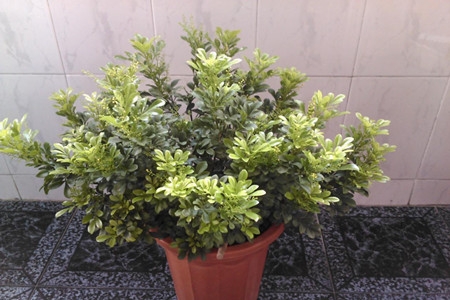
二、施肥引起
1、原因
在它生长期时,需肥量很大,所以此时需要肥料充足,不然就会让叶子开始发枯,同时还不可使用太浓肥料,不然就会烧根,叶子就会开始变黄发枯。
2、解决方法
生长期时,要确保它的肥料充足,并且不可施加过浓肥料,尽量稀薄一点,施肥时间以7到10天最佳,另外在施肥时,在里面添加适量的过磷酸钙,也可利于它的生长。

三、光照引起
1、原因
它虽喜光,但是光照不可过强,尤其是中午太阳较大时,此时如果不及时遮阴,就会烧伤叶子,让叶子变得干枯。
2、解决方法
养它时,最好放在散光处培养最佳,同时要保证室内光线充足,并且通风良好。如果想要将它放在室外养,只能每天早上和晚上将其搬出去,到了中午太阳较强时,就需要将其移回室内,这样可使叶片浓绿。
四、病虫害引起
1、原因
在生长时,它最容易染上叶斑病或介壳虫等病害,这样就会直接影响了叶子,让叶子变得干枯。
2、解决方法
为防止病害发生伤害叶子,每隔上15天到20的时间需想叶子上洒上一些干草木灰,这样可保护枝叶,防止病虫的伤害。
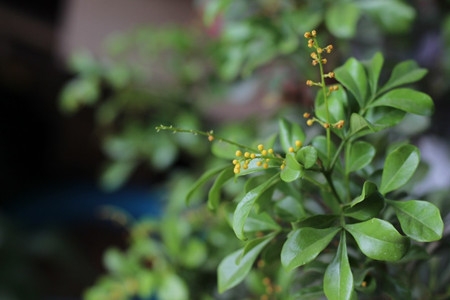
0
0
文章
巴黎铁塔
2018年05月04日


1、水分问题
(1)具体原因:上面我们已经说过,多了或者少了都不行。先说多了,因为这种植物的根比较细小,所以水多会使其呼吸受到阻碍。而且,营养的供应也会相应受阻,叶子就会发黄。另一种情况,若是水不足,干旱也会引起同样的后果。
(2)解决措施:根据不同的原因,调节水量的多少。一般来说,水量得有节制才行。在它成长季,每隔三到四天一次就行,每次都要浇透。
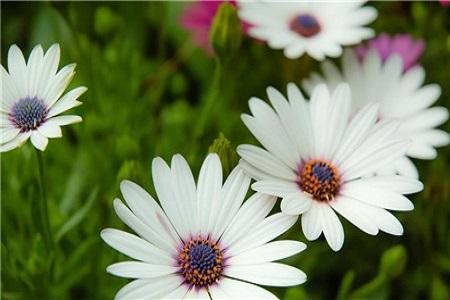
2、肥料问题
(1)具体原因:这里主要指的是肥的量太多,或者浓度太高。其根部可能会首先受害。接下来,它的叶子可能会出现干枯、或者变成焦黄的现象。严重的话,叶子甚至会大片掉落。
(2)解决措施:夏天是不要施的。其他的季节,一般只需要施加一些复合肥。并且,量一定要严格的控制。再就是量的问题,每次施加都不能太多。

3、光照问题
(1)具体原因:植株的成长肯定是不可缺光的,它是一种喜光的种类。很容易理解,若是光线太弱,那么叶子里边含有的叶绿素就会降低,那么叶子很可能就会发黄了。
(2)解决措施:针对这种情况,提供充足的光肯定有必要。除了正午可遮光之外,其他的时间最好放在向着太阳的地方。

0
0
文章
秋田
2018年05月04日

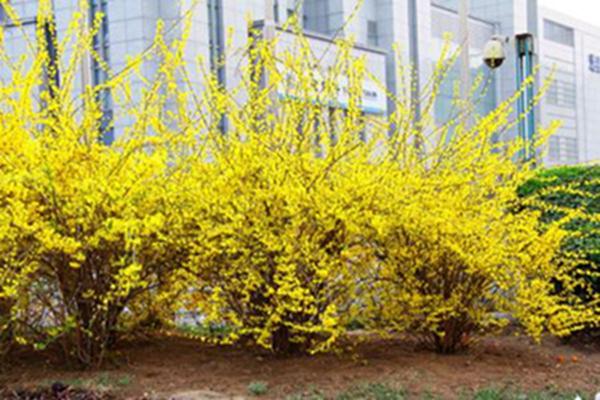
一、制作办法
1、大概种了3年左右,它的主干就会很粗。可以让它作弯,或者把它的顶部去掉,或者摘心,这就是初期的造型。要注意给它培养过渡的枝,让盆景长大后的枝和干的粗细更加协调。然后还可以到山野挖一些老桩给做成盆景,形态会十分的雅致,在很短的时间内就可以成型。
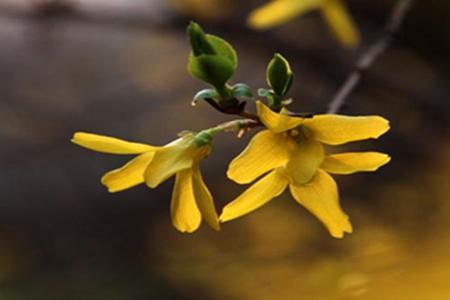
2、春天它看上去非常的灿烂,夏秋绿叶非常有生机。一般常见的盆栽形式有直干的形式,或者斜状的,或者弯曲的,或者放在水旁的,或者放在石头上的,都非常的好看。如果是人工的方式繁衍的植株,可以在它是幼苗的时候就对它的主干进行蟠扎和裁剪。因为它的枝比较长,在它的成长期就需要控制枝成长,促进侧芽新生,长成紧实的树冠,等到六月,它的新生的枝有六七成木质化,就可以蟠扎了,以此调整树冠。
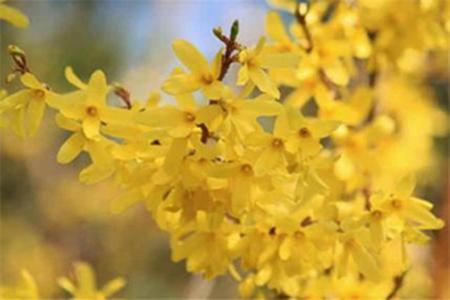
二、养护办法
1、首先在冬天到春天的时候把它给移种,先对它进行整形,把不需要的枝条给剪掉,然后把它种在比较大的花盆中,最好用比较疏松足够透气,排水效果比较好的沙土。然后把土给压实,给它浇透水,放在避风但是朝阳的地方。在它活下来之后等它的土干了再浇水,如果要浇,就要浇透。盆中的土太湿或者太干,都对它的成长不好,在成长期注意给它除芽,剪掉多的枝条。
2、它喜欢温暖有光的区域,可以忍受寒冷和干旱,但是害怕积水。在成长期间的时候可以把它放在屋外阳光比较足够,空气比较流通的地方,即使是高温也不用给它遮光,土不能太过于干旱,平常也要注意排水。要把多余的枝给去掉,保持它形态的优美,姿态的简约。

1
1
文章
权问薇
2018年05月04日


一、种植方法
1、分株
这个方法一般是在春天给它换盆的时候一起进行的,把它从盆中取出来之后,把它的苗给轻轻的分成几份,注意不能把它的根和叶给伤害了,要选择长的比较茂密的植株给分株。然后可以用直径为十五厘米的盆栽种,一个盆可以种三到四株,才能更好的成型,更好的长出花来。

2、扦插
这种方法是需要那些没有长花但是长得很粗壮的假鳞茎,把它们从根的地方剪断,然后再分成两三节,直接把它们插进苔藓中,或者把它们的底端给包扎好,让它保持湿湿的状态,放在温度有十八到二十二度左右的区域,三四十天后就可以长出根来,等到它的根长出来三到五厘米左右就可以把它移到盆中。
3、组织培育
这种方法比较专业,是用它的茎和叶的尖端作为本体,把它放在专用的培养基上面,就会长出来没有根的小苗,然后再放到含有吲哚丁酸的培养液体中,就可以帮助它长出根来,最后就能成为具备完整根茎叶的小株了。

二、注意事项
环境
要给它选择半阴半阳的区域,空气中的湿度要有百分之八十以上。如果是严冬,要为它创造一个零度以上的环境。
土地
要给它选择有小石块的地,最好上面有苔藓成长。每棵植株之间要有三十厘米的距离,有五厘米深的土。要把周围的杂草和垃圾给清理掉,给它增加透光。
栽种
应该要在春天三四月或者是秋天八九月的时候给它载种,其实春天比秋天更加好。可以在阴凉的石头下,把它塞入缝中,或者在树枝的凹陷处,把它割一些口子,把石斛种进去,然后用泥土把它固定住。为了避免风的吹动,或者雨水把它冲掉,可以用绳子把它捆住。

1
0
文章
权问薇
2018年05月04日

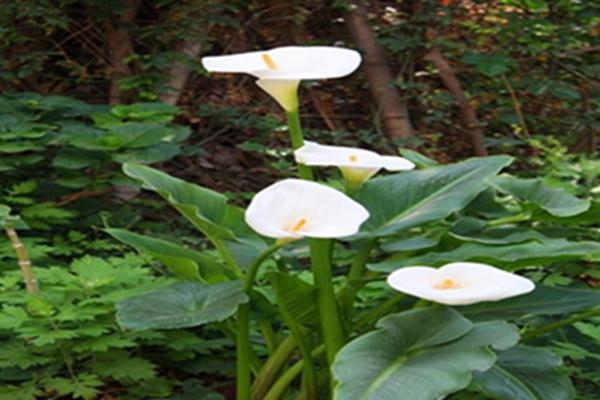
一、繁衍的方法
1、分球
这是它主要的繁衍方式,当它进入休眠期间的时候,我们需要把它块茎四周的小球形的植株给切下来,然后另行种植。
2、播种
这种方法需要我们等它的种子成熟以后将之采集,再进行播种,一般是种在屋内的盆中,让它发芽的温度要有十八到二十四度,等到十五到二十天后就可以发芽,一般种植后三个月就可以长出花来。
3、分株
等到五六月份长花以后,它的叶会慢慢的枯萎,然后会长出新的叶子。等到九月中旬给它更换新盆的时候,我们可以把它的母株附近的小茎给弄下来,然后给它上盆。

二、注意事项
1、如果是室外栽种的话,一般是在秋天以后再进行种植,两棵植株之间的距离要有二十五厘米,并且要用肥沃的发黏的土壤,一般用园土加上煤灰以及动物的粪便就可以。
2、在栽种之后给它盖上三四厘米厚的土,等到20天后就可以长出小苗。在成长期间,它喜欢充足的水分,我们需要经常给它的叶和周边的地面洒点水,并且要让它的叶保持干净。

3、它喜欢温暖湿润的区域,平时需要给它遮阴,在它长花的时候要给它充足的阳光,不然它的苞会带有绿色,对观赏不好。每天要给它三五个小时的光照,不然叶柄会长得很长,不太好看。
4、它对严寒的抵抗能力不是很强,等到十月中旬的时候要把它移到温房中,夏天除了要给它遮阴,还要给它喷水降温保持湿润。
5、它需要很大的肥,很大的水,在它成长期间要多给它浇水。可以用发酵过的化肥给它使用,每2个星期给它用一次,给它加肥的时候不要把肥撒在叶鞘中,不然它会腐烂。等到它的花蕾出现以后,要增加它的肥料,可以让它的花期变得更加的长,花更大,更加的好看。

0
1


